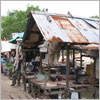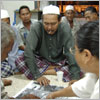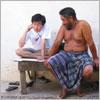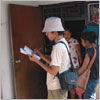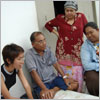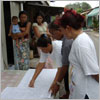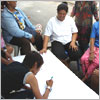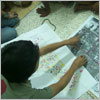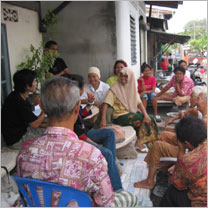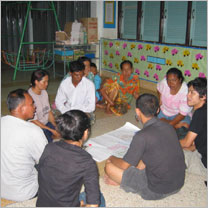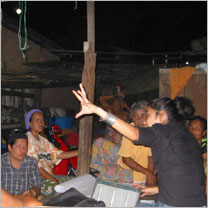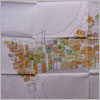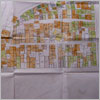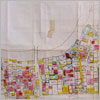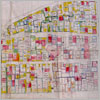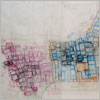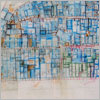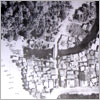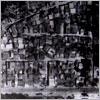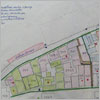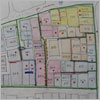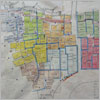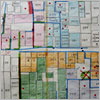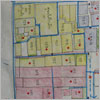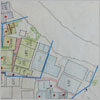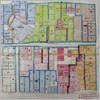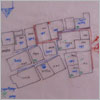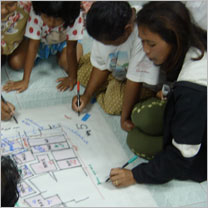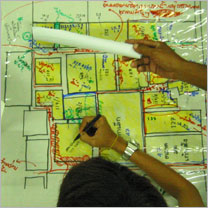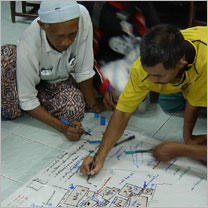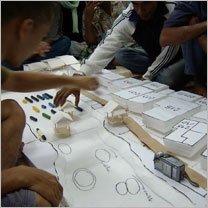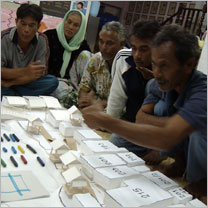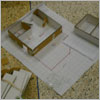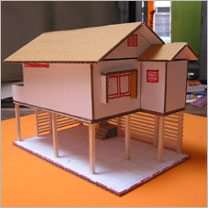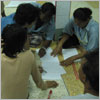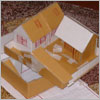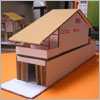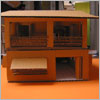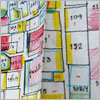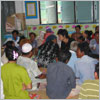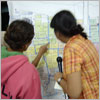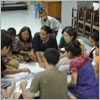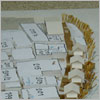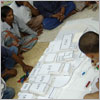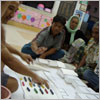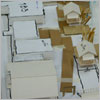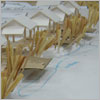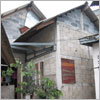 |
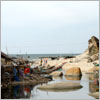 |
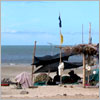 |
Kao Seng has been selected to be a pilot community to work
on 'Baan Man Kong Project' , a nation wide programme
of city wide community driven upgrading building secure community
housing with local partnership.
CASE was assigned by CODI (Community
Organisation Development Institute) to work on this project. Although
this community is considered a well organized one, we still hesitated
because of its complexity. |
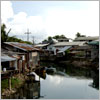 |
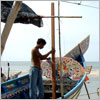 |
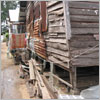 |
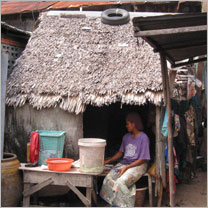 |
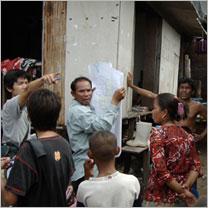 |
Anyhow CASE started working there by collecting
all physical information needed. Kao Seng is a big community comprised
of 480 families squeezed on a 26 rais (around 13 acres) land of a
government organisation. The people of Kao Seng have been living here
for more than 45 years partly illegally as they were evicted once
before from somewhere else and the government just thrown them to
this exist site. Kao Seng community has been divided by the people
into 5 zones to make it easier to organize. Even with 5 zones, we
still though that it was still too big to work with. |
Kao Seng is like a small country which has quite clear hierarchy. There
are groups of 'political' people, rich, poor, middle class and so on and
these groups are in definite areas although they are all connected in many
ways. Like in one country, poor does not have much influence in any aspect.
Their voice is always silence. This encouraged us to work with a smaller
group than 5 zones. Working with grass roots is always our concept even
in a community level!
To divide each zone into small groups, first we just looked at physical
conditions such as circulation systems and etc. to form a cluster then we
moved to the actual site to work with the people. This leaded to discussions
about who should be with what group, this was a good chance to observe their
social relationships. At the end we formed 33 groups concerning both physical
and social conditions.
Working in a small group had allowed the people, especially the
poor, to speak out what the problems really are and how to solve them properly
without any pressure. We used some similare cases beautifully presented
to compare with Kao Seng in order to encourage people to think of different/constructive
ways to improved their area. Local materials , existing resources and skills
had been taken into account naturally. This methodology worked well.
After 3 months we were able to put 33 improvement plans together to create
a major look of Kao Seng community improvement plan. At the moment Kao Seng
is implementing their plan. Although many problems have occurred during
the process, they are still working. Problems are fun and useful in some
way. We are now visiting the community from time to time to enjoy their
success and also problems!
|








